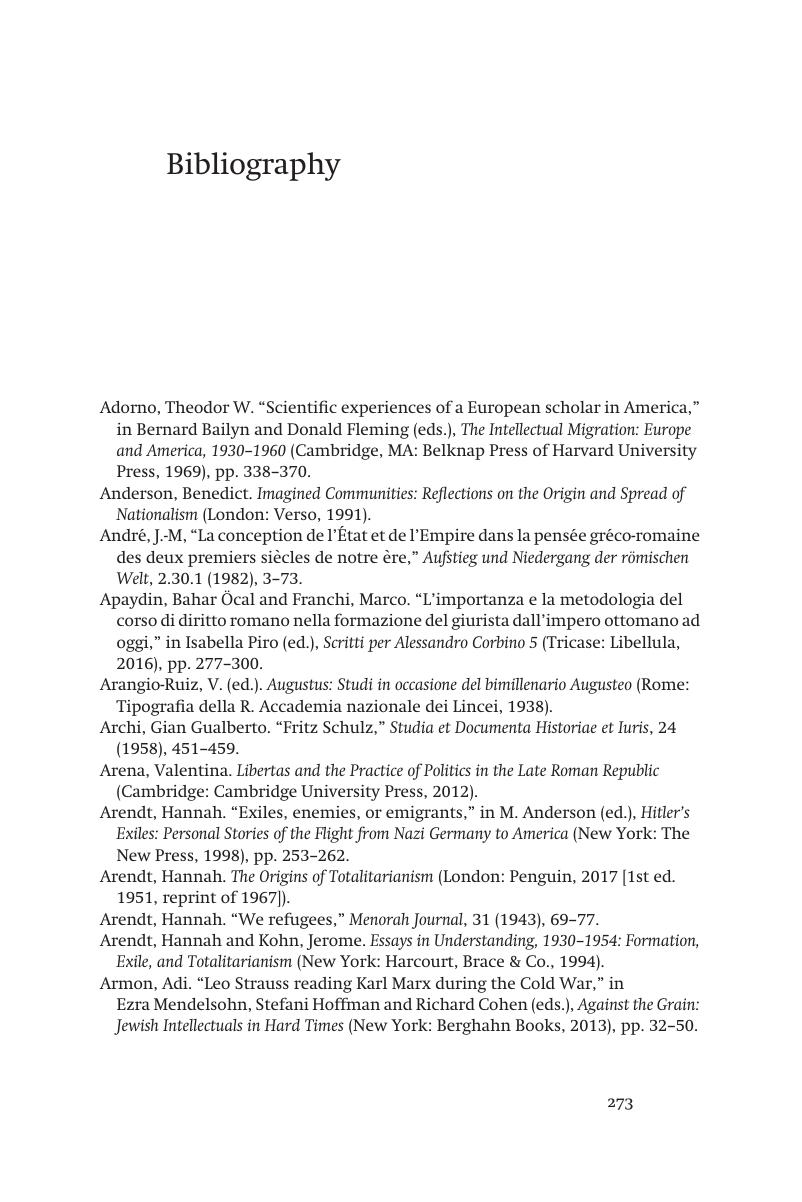Book contents
- Empire of Law
- Cambridge Studies in European Law and Policy
- Empire of Law
- Copyright page
- Dedication
- Contents
- Figures
- Preface
- Abbreviations
- 1 Introduction
- 2 Legal Refugees from Nazi Germany and the Idea of Liberty
- 3 Redefining the Rule of Law, Jurisprudence and the Totalitarian State
- 4 The Long Legal Tradition and the European Heritage in Nazi Germany
- 5 Reconfiguring European Legal Tradition after the War
- 6 The European Narrative and the Tradition of Rights
- 7 Conclusions
- Bibliography
- Index
- References
Bibliography
Published online by Cambridge University Press: 23 March 2020
- Empire of Law
- Cambridge Studies in European Law and Policy
- Empire of Law
- Copyright page
- Dedication
- Contents
- Figures
- Preface
- Abbreviations
- 1 Introduction
- 2 Legal Refugees from Nazi Germany and the Idea of Liberty
- 3 Redefining the Rule of Law, Jurisprudence and the Totalitarian State
- 4 The Long Legal Tradition and the European Heritage in Nazi Germany
- 5 Reconfiguring European Legal Tradition after the War
- 6 The European Narrative and the Tradition of Rights
- 7 Conclusions
- Bibliography
- Index
- References
Summary

- Type
- Chapter
- Information
- Empire of LawNazi Germany, Exile Scholars and the Battle for the Future of Europe, pp. 273 - 306Publisher: Cambridge University PressPrint publication year: 2020

